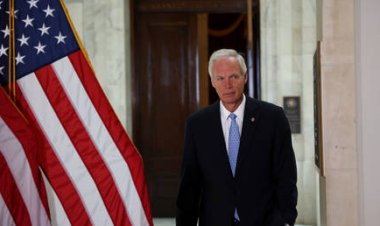Forecasts for US economy reduced as Trump's 'Liberation Day' approaches
As the economic policies of US President Donald Trump begin to have an impact both domestically and internationally, the rollout of reciprocal tariffs on April 2, referred to as Trump's "Liberation Day," has led US agencies and global organizations...

Tariffs have been introduced under various justifications, such as illegal immigration, the illegal drug trade, trade imbalances, and the goal of repatriating manufacturing. These tariffs target specific goods and countries. The reciprocal tariffs will expand these measures to a broader level, following a straightforward principle set by Trump: "We tax you what you tax us."
Despite this strategy, numerous US financial institutions have cautioned that initiating tariff wars on a global scale could adversely affect the economy, potentially resulting in higher consumer prices and job losses within American industries.
According to economists at Goldman Sachs, there is a 20 percent probability that the US will enter a recession within the next year.
"An outlook for slower growth suggests lower valuations on a more sustained basis," remarked David Kostin, chief US equity strategist at Goldman Sachs Research, in light of a revised forecast for the S&P 500 index.
Morgan Stanley has revised its projections for US growth, lowering its forecast for 2025 from 1.9 percent to 1.5 percent and for 2026 from 1.3 percent to 1.2 percent. The company cites increased impact from tariffs and a still-sluggish labor market as contributing factors to rising inflation.
Earlier and broader tariffs are expected to translate into modest growth this year, contrary to previous assumptions that their impact would mainly affect growth in 2026, according to Morgan Stanley economists led by Michael T. Gapen.
The tariffs and counter-tariffs introduced by the Trump administration in 2025 could potentially lead to a reduction in global output by approximately 0.3 percent by the end of his term, with global inflation increasing by 0.4 percentage points per year during the first three years, as reported in the OECD Interim Report for March 2025.
On March 27, the US Congressional Budget Office indicated that the economy is likely to experience slower growth, as detailed in their Long-Term Budget Outlook: 2025-2055. The CBO noted on its website that the nation may face subdued economic expansion over the next three decades due to sluggish population growth and rising government expenditures.
Ramin Sohrabi contributed to this article for TROIB News
Find more stories on Business, Economy and Finance in TROIB business












